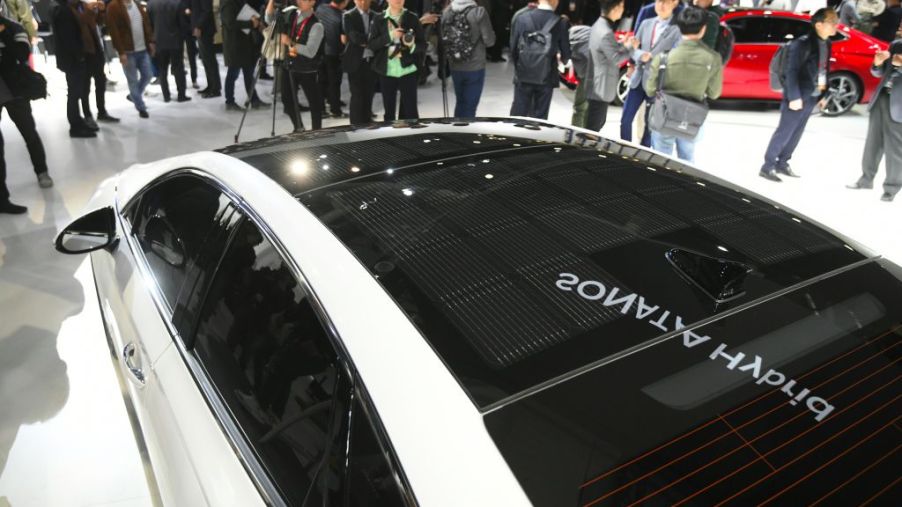
Hyundai Unveils Solar-Panel Roof for 2020 Sonata Hybrid
It may be time to retire your garage. Seriously. Hyundai just announced that it’s releasing the all-new Sonata with solar panels on the roof that require it to bask in the sun for a few hours each day. That’s exciting news for anyone looking to upgrade their vehicle to an electric option.
In 2018, the Korean Car Blog took pictures of the test model Sonata out for a drive and were the first to realize what Hyundai was up to. Since then, speculation has been high about how much mileage the new Sonata would get and how it would perform against similar models.
This isn’t Hyundai’s first electric model, as the automaker released the Sonata PHEV in 2016, and it outperformed even what Hyundai expected. The plug-in hybrid was able to get 99 mpg and 27 electric miles.
With such a promising start, the new solar panel version will most likely find a warm welcome from consumers tired of waiting in line at the pumps.
2020 Hyundai Sonata specs
Excitement is running high and Motor Trend reports, ” The 2020 Hyundai Sonata Hybrid’s new party trick is its six-speed automatic transmission, which features Active Shift Control (ASC), a logic software used on the hybrid control unit that smooths out and reduces shift times by 30 percent via aligning engine and transmission speeds.” Add in a 2.0-liter four-cylinder engine, 150 hp, and 138 lb-ft of torque, as well as a 38-kilowatt electric motor for a combined output of 192 hp, and you have the makings of a very impressive little electric vehicle.
Hyundai states, “The system recharges the battery to increase travel distance while preventing unnecessary battery discharge. The solar roof system, with 6 hours of daily charging, is expected to increase travel distance by an extra 1,300 km annually.” 1,300 km equates to 808 miles.
How soon will we see this new Hyundai in the U.S.?
Like all good things, it’s going to take some time. In other words, we don’t have an exact answer, but a Hyundai spokesperson told Car and Driver, “information on the U.S.-spec Sonata hybrid will be available later in the year, at which point we should find out about pricing and fuel-economy numbers.”
What does this mean for electric cars in general?
This is a game-changer. Carmakers often assure new consumers that there are plenty of public electric charging vehicle stations, but that’s far from the truth.
Electrek reports that as of June 2019, there are only “16,000 public electric vehicle charging stations with 43,000 connectors in the U.S.” That’s not a very large number. It’s fine for those who live near a public charging station, but trying to locate them on a road trip may be a nightmarish experience, especially if you’re driving through a rural area late at night.
With solar panels on the roof that charge just by sitting outside, the fear of not reaching a charging station in time is now void.
Are there any other cars that have solar panels?
Yes, but they haven’t made it the U.S., at least not yet. Toyota has released the Prius PHV (Prius Prime in the U.S.) in Japan back in 2010. It has yet to release any solar panel roof vehicles officially to the U.S., but that may be changing soon.
Car Scoops reports that the Prime will begin doing road tests as early as July 2019. The new Prius will be able to charge while the car is sitting still and while on the move.
Whether other automakers will jump on board and offer solar panel cars remains to be seen, but if sales go well for Toyota and Hyundai, it’s probably only a matter of time.


